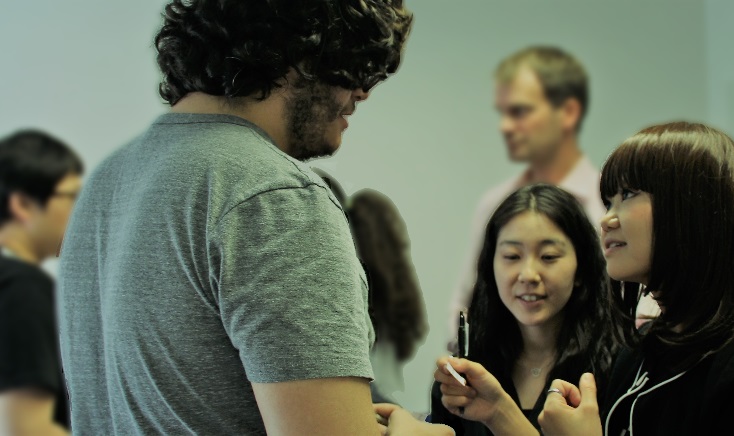Here’s an idea for making speaking activities last 3 TIMES as long! I call it ‘I, she, you’ because it practices 1st, 3rd and 2nd person singular verb forms, in that order. It works especially well in secondary classrooms with teenage students who are a little reluctant to speak. There are 5 stages to the activity (one is preparation), and it can get them speaking for anything from 5 to 50 minutes, depending on how much time and how many questions you have!
Stage 1: Identify your personalisation questions
The key ingredient you need is a set of ‘personalisation questions’. These are questions where each student talks about her/himself. You know the kind of thing – they nearly always have either ‘you’ or ‘your’ in them, and each student’s answers will be personal. Here is a set of perhaps the simplest personalisation questions we can think of for A1 level:
- What is your name?
- How old are you?
- What is your favourite food?
- What do you like doing in your free time?
And here’s a set of more complex personalisation questions that would challenge students right up to C1 level:
- What is your definition of happiness?
- When were you last truly happy?
- Who were you with?
- What were you doing?
- Why did it make you happy?
There are 2 great things about personalisation questions. Firstly, we ALL love talking about ourselves. And secondly, you can think of personalisation questions for almost any topic, or area of grammar.
Stage 2: Prepare the students to remember
Normally, when many students ask and answer personalisation questions, they take turns to talk without actually listening to their partner. But this time, you’ll need to warn them:
“OK guys, we’re going to do a speaking activity, but today you will need to listen carefully to everything you hear, because someone is going to check your answers in the final stage of the activity, and they will notice any factual mistakes you make.”
Stage 3: ‘I’
Distribute the personalisation questions on a handout, or write them on the board. Then put students into pairs, and get them to tell each other their answers. For example, Chantal tells Louis her answers, and vice versa: ‘My name is Chantal. I am 14 years old… etc.’ Your learners may want to take notes – good idea!
Stage 4: ‘She’
Now, put the students into new pairs, so that they’re talking to someone new. Depending on your classroom layout, students may be able to turn around and talk to the student on their other side, behind or in front of them. Alternatively, they could stand up and find someone at random. You know what works in your classroom! But this time, they answer the questions for their previous partner, using the 3rd person. For example, Louis now tells Anne about Chantal: ‘Her name is Chantal. She is 14 years old. etc.’ and vice versa.
Stage 5: ‘You’

This is the fun stage. But it also has an important assessment role. It serves to assess their ability to understand and convey information accurately and meaningfully. And if they succeed, it motivates them, of course! Each learner now has to find the student that they have just learnt about. So, in our example, Anne now has to find Chantal, and tell Chantal what she now knows about her, using ‘you’: ‘Your name is Chantal. You are 14 years old. etc.’ And Chantal, being an expert on herself, can tell Anne if her answers are correct or not! But that’s not all – at the same time, Chantal will be looking for a different student to tell her answers to, so there will be a little bit of ‘organised chaos’ while they do this. During this stage, your role will change briefly from teacher to shepherd. But be patient – everyone knows who they’re looking for, and they also want to hear about themselves and to assess whether the information that has been disseminated is correct! I’ve seen this work in classes of over 70 students, albeit with a little L1 involvement, especially when they provide feedback on factual mistakes, which is understandable! If you like, they can award marks to each other, 1 for each correct answer.
Job done!
Instead of just talking about themselves, each student has now practised using first person: ‘I’, third person: ‘she/he’ and second person: ‘you‘. As well as providing useful manipulation of the grammar, we’ve just made the speaking activity last 3 times as long! 😊
I call it ‘I, she, you’. Share it with colleagues, and let me know how it goes!

It-s good for large classes where students don-t know each other. Otherwise in a class at school where they know everything about their mates it’s not so cool. Thank you
LikeLike